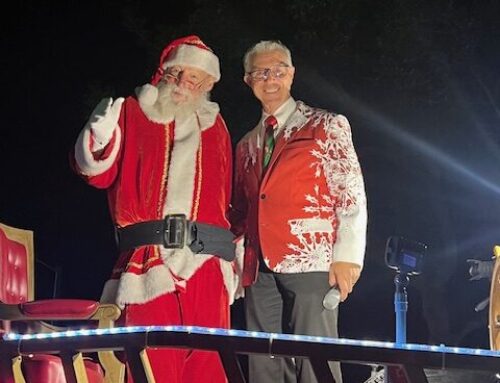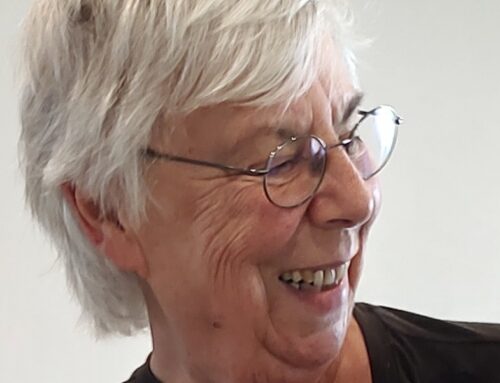Published in the March 2-15, 2016 issue of Morgan Hill Life
By Marty Cheek
When I was a cub reporter for a technology-based news service, my editor assigned me to research and write a story about a specialized conference convention in Silicon Valley dealing with a technology I had never heard of called “spread spectrum.” What I discovered at that conference opened my eyes to a fascinating realm of communication technology — and broke down a couple of stereotypes I had about scientists.
In a San Jose hotel I found the usual convention tables and exhibits dealing with products and services related to the spread spectrum industry. The majority of people there were very, to put it bluntly, nerdy-looking white guys with pocket protectors firmly placed in their shirts. I introduced myself to one of them and immediately began following my first rule of reporting on technology-related issues: acknowledge your ignorance. I told the person that I had never heard of spread spectrum until an hour or so before. The engineer smiled broadly and said I needed to meet the president of the spread spectrum association. He dragged me to another table and introduced me to the fellow (whose name, unfortunately, I have forgotten because it’s been about 25 years). I felt a disconnect on seeing the guy. He was definitely a geek. He was also black… a black geek.
The man gave me a dumbed-down tutorial about spread spectrum technology, explaining that it’s a form of wireless communication that uses a technique in which a telecommunication or radio signal is transmitted in a deliberately varied way across a bandwidth considerably larger than the frequency content of the original information. Most spread spectrum signals use a digital scheme called frequency hopping where the transmitter changes frequencies many times each second. It was originally developed for military communication where security is important because it is hard detect, intercept or demodulate. It is also used in commercial applications including cell phones, Wi-Fi networks and Bluetooth.
Many of the details the man told me about spread spectrum went over my head. Although I was trying to process the information, a persistent stream of thought kept going through my mind: “This guy is black. He’s a black geek.”
I felt embarrassed by this thought. He was a nice man, very smart, and he went totally against the stereotypes of what I thought an engineer was “suppose” to be. Yet, here he was, a black man teaching me the basics about a technology where he had great expertise. And then the man told me something else that blew my mind. He told me that spread spectrum had been invented by a woman. Not just any woman, mind you… “a movie star.” He asked me if I had ever heard of the classic film actress Hedy Lamarr. I had indeed heard of her. Her co-stars in various films had included Jimmy Stewart, Charles Boyer, Spencer Tracy, Clark Gable and Bob Hope.
It turns out that besides being a famous actress, the Austria-born Lamarr was also an inventor. She had come up with an idea to improve the traffic stoplight. Another invention was a tablet that, when dissolved in water, created a carbonated beverage (she herself admitted that the drink tasted awful). Most important, during World War II, she and her composer friend, George Antheil, came up with an idea for frequency hopping for the radio-guidance systems for torpedoes. They used a method similar to how a player piano roll works to continually change the radio signals sent to the torpedo, thus preventing the enemy from finding the signal and jamming it. Their invention received a patent in August 1942.
Unfortunately, Lamarr’s invention did not receive support from the U.S. Navy. Twenty years later, during the Cuban missile crisis, it did it get used in Navy ships. Today, it’s used extensively in the high-tech communication gadgets that are so common in our 21st century world.
The reason I bring this up is because March is Women in History Month. Too often, we think of the women in American history who made a difference as the political activists such as Rosa Parks, Betty Friedan and Susan B. Anthony. But there are also women in science who have shaped our world — women like Grace Hopper (one of the earliest computer programmers), Rachel Carson (a marine biologist who helped ignite the modern environmental movement) and Hedy Lamarr. Still, despite these role models of women in science, many young women do not go into science or technology fields.
A Yale research study published several years ago found only one-fifth of physics Ph.D.’s in the United States are awarded to women — and only about half of those women are American. Of all the physics professors in the United States, only 14 percent are women. The numbers of black and Hispanic scientists are even lower. In a typical year, 13 African-Americans and 20 Latinos of either sex receive Ph.D.’s in physics, the study found.
Many minority students and girls received secondary school educations that leave them too far behind to catch up in science. The effects of prejudice during the early years can impact a young woman’s choice of going into STEM.
But that’s starting to change with a transformation in social attitudes and expectations. And we’re seeing it here as several of our public schools move toward the focus academy model of education. It started with Jackson Academy of Math and Music. The following year it moved on with P.A. Walsh STEAM Academy and San Martin/Gwinn Environmental Science Academy. And in August, we’ll see Paradise Valley Elementary School transform into an engineering-focused academy. Hopefully, with these changes, girls and minorities will start to see the potential of careers in science and technology. Who knows, perhaps in one of these schools is a young girl who, with Hedy Lamarr as her role model, dreams of being not just a glamorous movie star but also a scientist.








